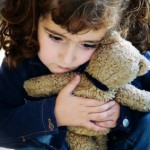By Alan and Shonna Hammond
Suffocation is the fourth leading cause of unintentional child death. Not “intentional” suffocation as with homicide, but accidental, unexpected death by suffocation. Most people can imagine the horror of going into your infant or child’s room in the morning and finding the little one lifeless. It is a very real occurrence, but also one that is preventable.
According to a study conducted by the National Center for Child Death Review, most unintentional [tag-tec]suffocation[/tag-tec] occurs due to the following factors:
- Overlay: When a person with whom the child is sleeping rolls onto and smothers the child
- Positional asphyxia: A child’s face becomes trapped in soft bedding or wedged into a tight place, as between a mattress and wall
- Covering of the face or chest: When an object prevents the child from breathing by covering the mouth or compressing the chest, e.g., plastic bags, heavy bedding or furniture
- Choking: When a child chokes on an object such as food or a small toy
- Confinement: When a child becomes trapped in an airtight place such as a refrigerator or toy chest
- Strangulation: When a rope, cord, hands or other object strangles a child
As you can see, the good news is most, if not all, of these factors are preventable.
Sleeping with children can be seen as a period of parent-child bonding; a time of closeness. But the risk factors outweigh the benefits when armed with the knowledge that parents can unintentionally suffocate their child. An alternative, if having the child in the room with the parent’s is the goal, would be to have the child sleep in a safe crib or child bed beside the parent’s bed.
It is so very cute to see the child sleeping peacefully among the stuffed animals, fluffy pillows and toys. Here again, however, the risks far exceed the gratification experienced by parents. Even with [tag-ice]toddlers[/tag-ice], who have gained some strength and ability to get themselves out of a tight spot, the same risk is present as with an infant. Even though a toddler will protest when the stuffed animals are taken away at bedtime, it is in their best interest. Parents, grandparents and care givers must be persistent and not indulge the child’s pleadings. Their young lives depend on it.
In the same fashion, fluffy pillows and comforters provide what adults see as an ideal sleeping atmosphere. That may be true for an adult, but it is no doubt deadly for children. Infants are particularly at risk of asphyxiation with bedding that is too soft. Likewise, comforters that are too heavy place a child at risk in the event that their face becomes covered. The increased activity from infant to toddler may be a blessing in some ways, but the increased activity can cause the child to become entangled in bedding that is not age appropriate.
Toddlers and preschool aged children are those most at risk for choking and strangulation. Their increased activity puts them at risk of choking on food or small objects, such as deflated balloons and parts from toys, as well as becoming strangled by window blind cords, rope or other objects. Clothing with drawstrings should be avoided, too. Thankfully, clothing with drawstrings is difficult to find, but some coats and jackets continue to use them.
Manufacturers of everything from toys to window blinds to clothing have recognized the danger in their products. This has likely occurred due to their bottom line having been impacted by concerned parents and advocacy groups refusing to buy their products. Diligence can bring about needed change on both a large and small scale. It first begins in the home. Win that battle and then on to bigger things.
No part of this article may be copied or reproduced in any form without the express permission of More4Kids Inc © 2007










Add Comment